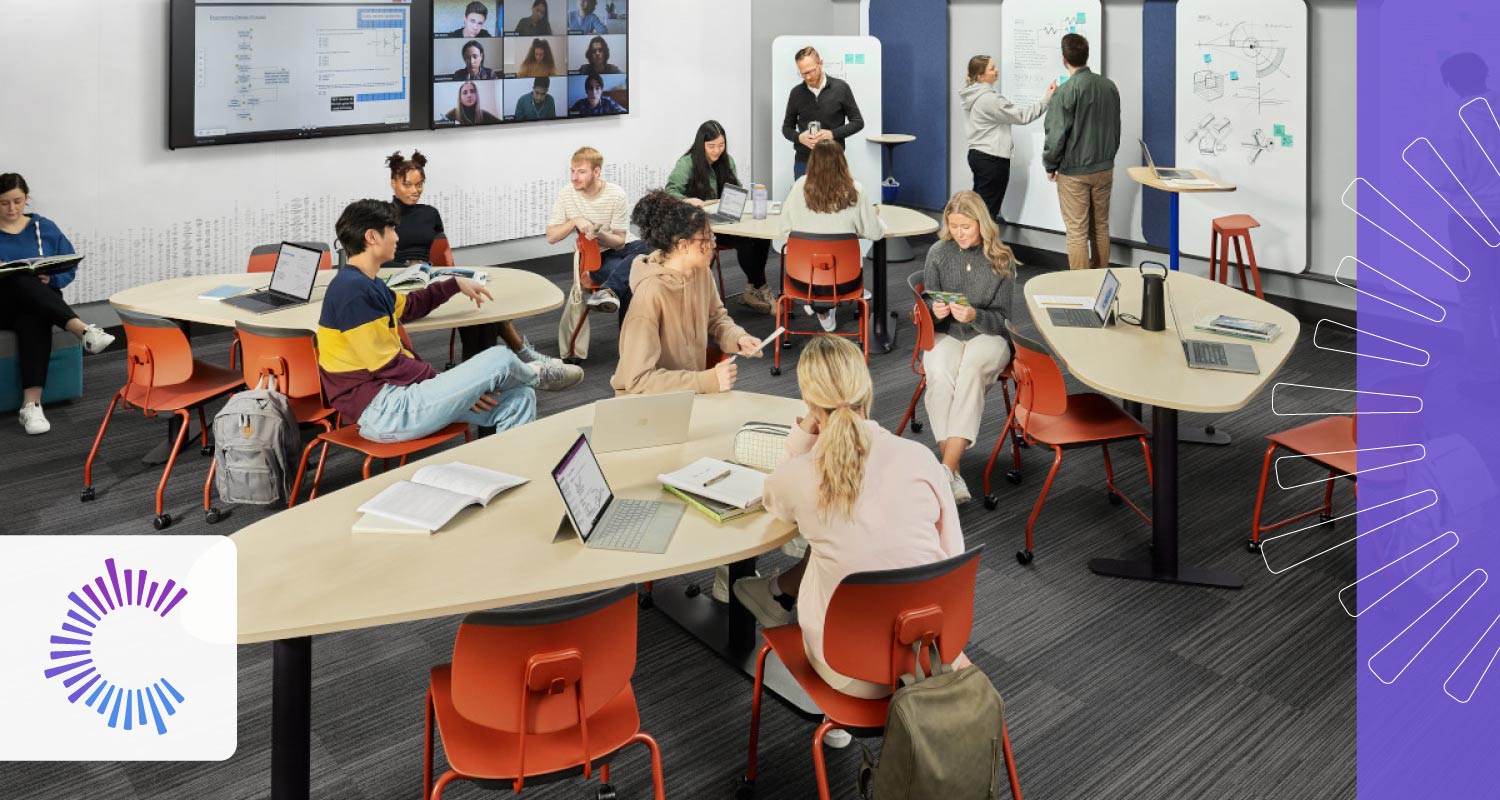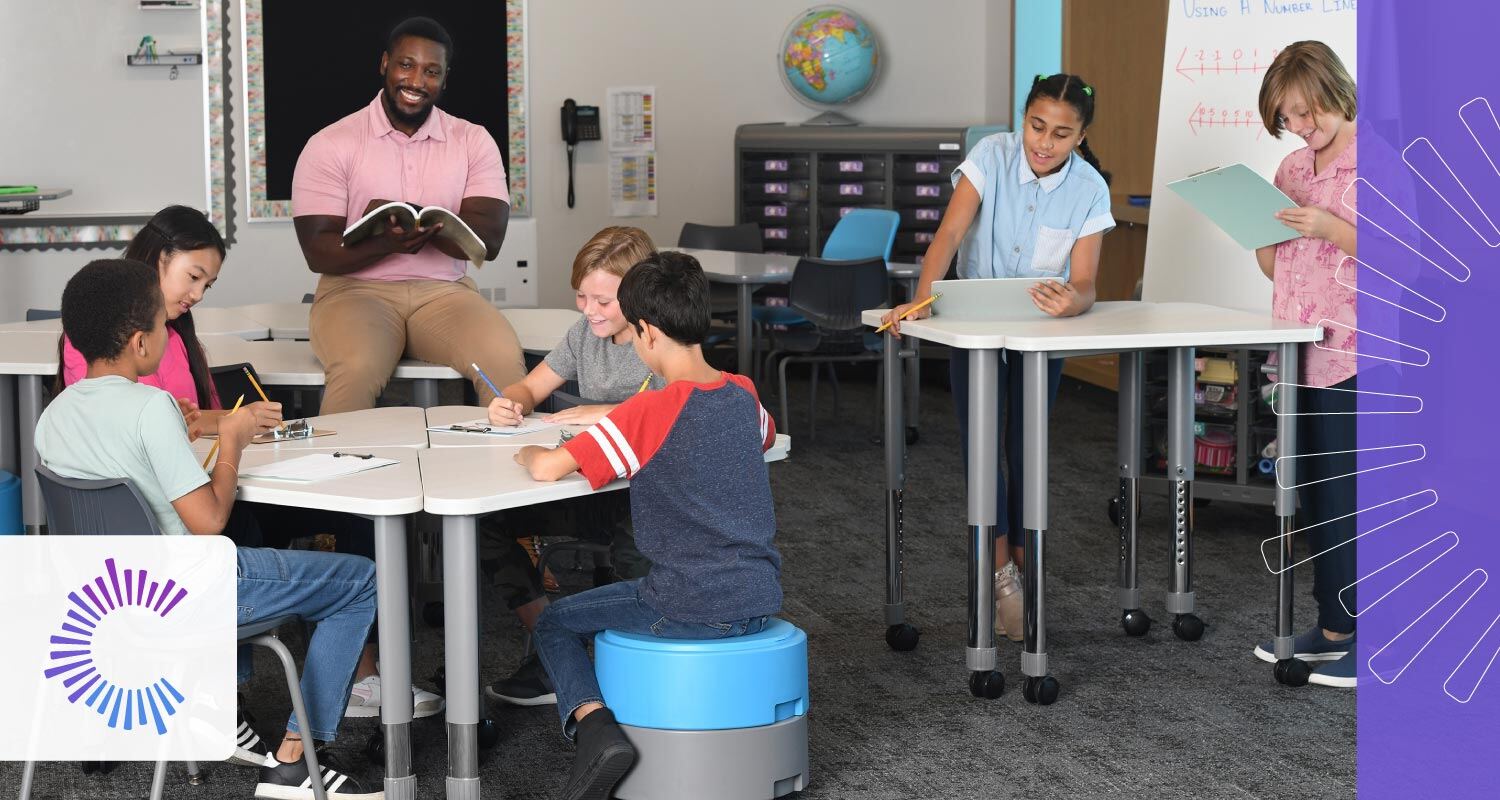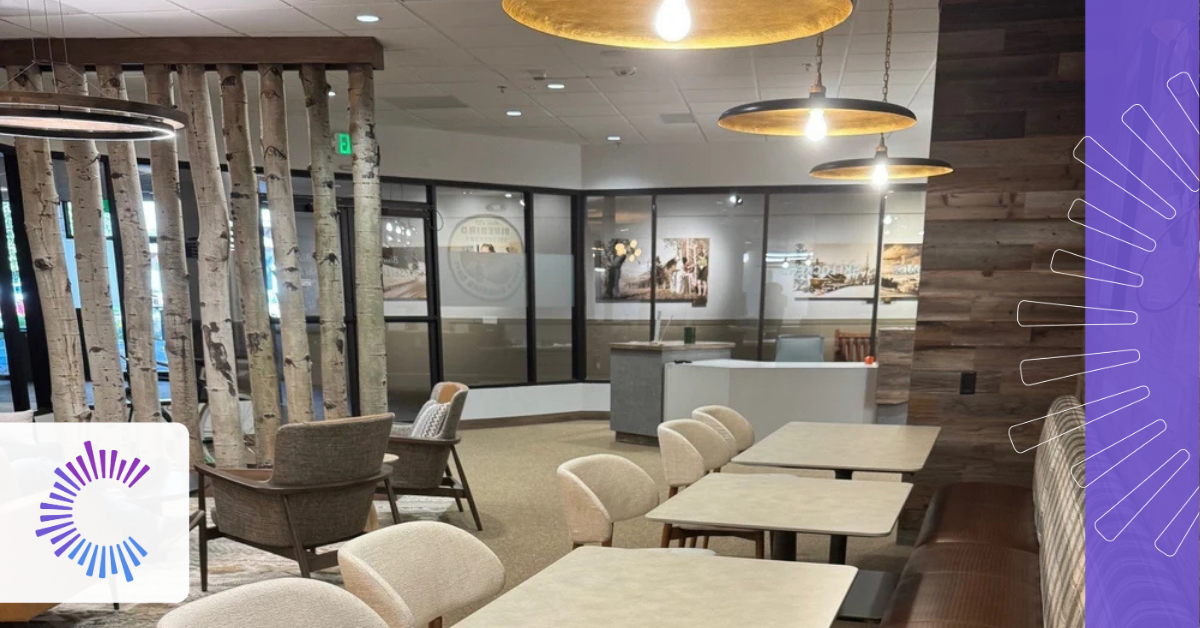InfoComm 2025: A Look at the Future of AV
Every year, the audiovisual (AV) industry convenes at InfoComm, the premier event showcasing the latest innovations and connecting professionals from...

Each fall, students return to school after a summer filled with screen time. From social media to streaming and endless scrolling, today’s learners are surrounded by digital noise. And after months of media saturation, many students step back into learning environments that only add to the overload.
But what if the spaces themselves could help students reset?
At Circadia, we believe great design does more than look good. It syncs with the natural rhythm of life, including how students learn and grow. Melissa Minford, Circadia’s education leader, recently explored this idea with architects and higher education professionals in a presentation on “Digital Detox” for students. The concept resonated deeply.
Here’s why it matters, and how purposeful design and education furniture solutions can support student well-being in the year ahead.
Today’s students are navigating life in overdrive. Gen Z and Gen Alpha spend more time online than any generation before them. In fact, research shows that teens now spend six to eight hours a day on screen-based leisure activities.
The impact is clear:
This constant connectivity has changed how students interact with their world, themselves and each other. While digital tools are here to stay, the learning environment can help restore balance.
While students may be more digitally connected than ever, many are experiencing a lack of real connection. The more time they spend in digital spaces, the less time they spend in activities that develop creativity, social skills and confidence.
In her presentation, Melissa outlined the stark contrast between play-based and electronic-based childhoods. When screens replace movement, exploration and in-person interaction, students miss out on critical opportunities to build emotional resilience and self-regulation.
The result? A generation that is overwhelmed, overstimulated and struggling to cope. That is where intentional space design becomes a powerful intervention.

A digital detox does not mean removing all technology. It means creating space for students to unplug, recharge and reconnect with themselves and others. It means designing environments that encourage focus, movement and mindfulness.

Here are five ways education spaces can promote balance and well-being.
Play is essential to emotional development. Learning spaces that support unstructured play, discovery and movement help students build confidence, collaborate and manage emotions.
This could mean incorporating zones for child-led learning, hands-on activities or group projects. The best classroom furniture supports flexibility, allowing students to move, create and engage in meaningful ways.
Tables for classrooms that can be rearranged easily, soft seating areas and interactive zones all encourage exploration and reduce passive screen time.
Students need more than instruction; they need restoration. Mindfulness rooms, counseling centers, sensory spaces and quiet zones offer students a place to decompress and regain focus.
These wellness-forward environments should be equipped with soft lighting, calming colors, and thoughtful education furniture solutions that foster a sense of safety and belonging. When students have a place to go when they feel overwhelmed, they are more likely to stay engaged throughout the day.

On average, students sit for nine hours a day. That amount of stillness has physical and cognitive consequences, from poor posture to reduced concentration. But movement does not have to be limited to gym class.
Incorporating flexible seating, rocking stools or mobile desks invites movement in everyday classroom settings. These design choices can improve focus, relieve stress and support better learning outcomes.
Modern classroom furniture is not static. It adapts to the needs of the learner, giving students options that promote activity and agency.
Reducing screen time during the school day starts with clear expectations, but space can help reinforce those goals. Schools can design storage solutions like lockers, cubbies or phone pouches that make it easy to keep phones out of sight and out of mind.
Designating specific areas as phone-free zones or quiet zones also helps normalize device-free moments. These intentional choices support both social development and academic focus.
Nature is a powerful antidote to anxiety and overstimulation. Incorporating biophilic designs – natural light, greenery, organic shapes and earthy materials – can help students feel more grounded and less digitally fatigued.
School library furniture, wellness centers and even hallways can be designed to include natural textures and sensory features. The more we bring the outside in, the more students can restore their attention and emotional regulation.
 As schools welcome students back this fall, now is the time to reimagine what learning environments can do. We can no longer view classroom furniture and design as an afterthought. These are tools for transformation.
As schools welcome students back this fall, now is the time to reimagine what learning environments can do. We can no longer view classroom furniture and design as an afterthought. These are tools for transformation.
When we choose the best classroom furniture, we are not just improving aesthetics. We are influencing how students feel, how they learn and how they grow.
At Circadia, we approach every project with a holistic lens. From modern classroom furniture layouts to entire campus-wide wellness centers, our spaces are designed to support human connection, creativity and performance.
Whether we are outfitting school library furniture or designing new wings for higher ed campuses, our team collaborates with clients to create spaces that meet both operational and emotional needs.
Students are not just learners. They are people navigating an increasingly complex world. And right now, many of them are carrying the weight of overstimulation and under-connection.
Space cannot solve everything. But it can support.
It can encourage healthier habits. It can foster independence and resilience. It can help students rediscover what it feels like to be present, curious and calm.
Let’s design for that.
Interested in creating learning environments that promote wellness, balance and student growth? Let’s talk about how Circadia can support your campus with education furniture solutions and space planning that makes a difference.

Every year, the audiovisual (AV) industry convenes at InfoComm, the premier event showcasing the latest innovations and connecting professionals from...

The classroom isn’t what it used to be—and that’s a good thing.

Designing a Seamless Ski-In, Ski-Out Experience When you’re a stone’s throw from a ski lift in Colorado’s Vail Valley, expectations are high. So...